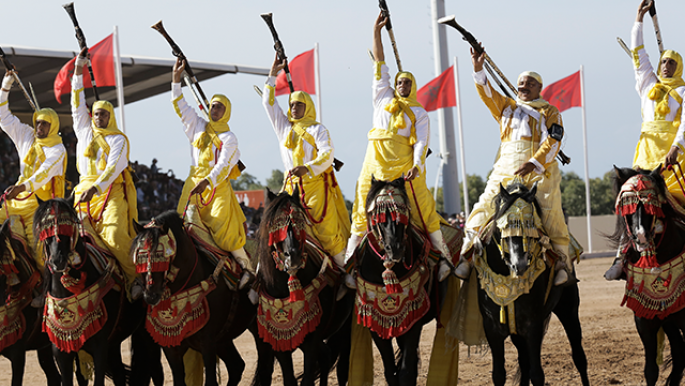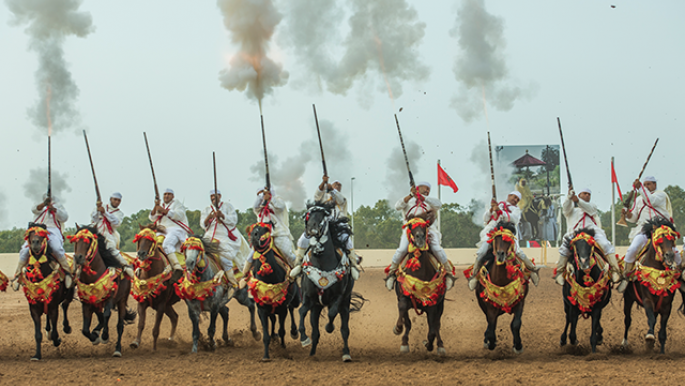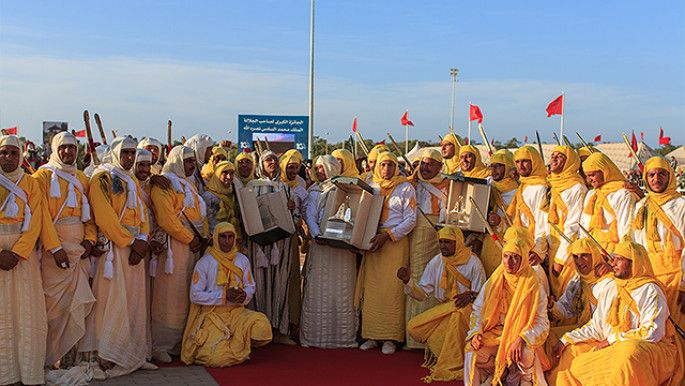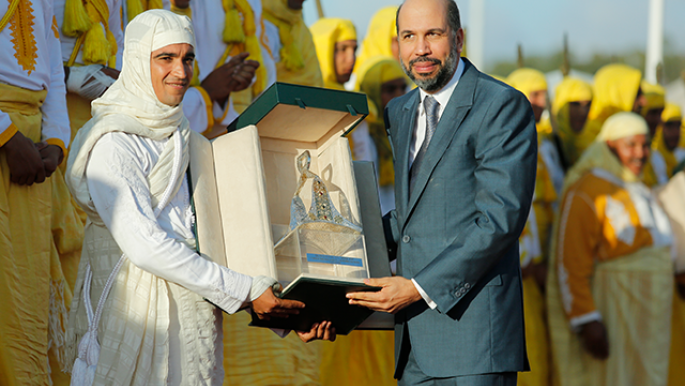'Bravery, glory, and honour': El Jadida celebrates Morocco's rich horse heritage
Founded in 2008, the show aims to revive horse activities, promote the socio-economic development of the rural world, and contribute to raising awareness of equestrian traditions in Morocco.
More that 230,000 visitors came to see the various spaces of the fair from October 16-21 at the Mohamed VI Exhibition Centre. Under the theme of "Equestrian sports in Morocco," around 1,000 horses of the main equine breeds - beard, Arabic-beard, Arabian thoroughbred and English - were engaged in various competitions and performances. Around 500 ponies were used in the initiation and for fun activities for children.
"The El Jadida Horse Show has become a showcase for our rich horse-related cultural heritage. It is an opportunity to express Moroccans' deep attachment to these noble creatures as well as develop equestrian activities in Morocco," said Charif Moulay Abdellah Alaoui, the fair's president.
The event is a great meeting point for professionals and horse lovers and each year the show brings together experts from all over the world.
 |
|
 |
|
 |
|
 |
|
| This year's El Jadida Horse Show [All pictures taken by Jalal Bounouar] |
Renowned internationally, this year's event saw 28 countries take part in competitions to win the King Mohammed VI Grand Tbourida Award.
During the show, each region is represented by a team known as "sarba," made up of distinguished riders and horses. They are equipped with a high quality harness reflecting the artisanal know-how of Morocco's regions.
Maher El Bacher's sarba from the Casablanca-Settat region won the biggest competition of the show for the second consecutive year.
"The competition was very intense," Maher told The New Arab. "We kept our concentration going and are happy to be the winners in this great sport and cultural event."
Visitors gathered to watch the tbourida, mesmerised by riders in their colourful traditional costumes, riding beautiful stallions. Tbourida, or fantasia, is a traditional exhibition of horsemanship in the Maghreb performed during cultural festivals.
The performance consists of a group of horse riders, all wearing traditional clothes, charging along a straight path at the same speed to form a line. At the end of the charge, they fire into the sky using old muskets or muzzle-loading rifles.
It is considered a key element in the country's intangible cultural heritage and has become a tribal, rural and religious tradition. It has always been practiced to celebrate local feasts and show the bravery of young people and their readiness to protcet the tribe.
"Horses in Moroccan culture symbolise bravery, glory, and honour," said Dr Khaled Touzani, a Moroccan researcher in cultural studies. He explained that horses played a vital role during wars and daily activities, as well as during public events related to kings and Sultans. Since then they have become an integral part of the Moroccan identity
"Horse riding and tbourida events celebrate the attachment of Moroccans to horses. Even our kings and Sultans have been riding horses as a sign of courage, leadership and nobility," he added.
Jalal Bounouar is a reporter from Morocco.
Follow him on Twitter: @BounouarJalal





 Follow the Middle East's top stories in English at The New Arab on Google News
Follow the Middle East's top stories in English at The New Arab on Google News


